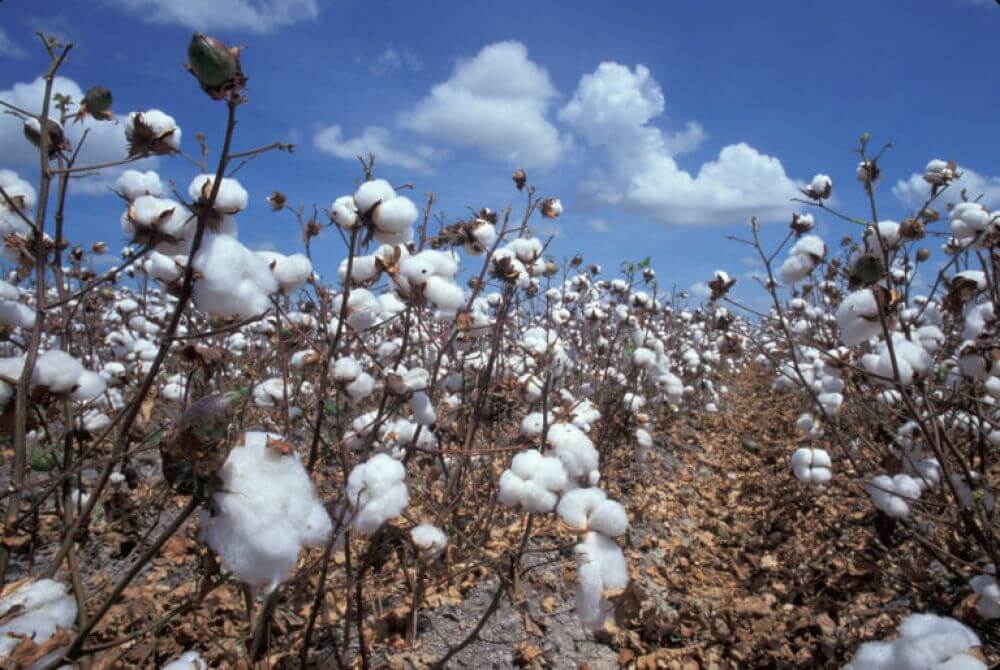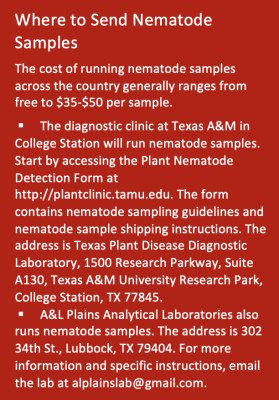
Sample Now For Next Season’s Plan
By this point in the season, growers are thinking about all sorts of issues with their cotton crop. Nematodes are probably not top-of-mind unless something is going on in the field that doesn’t quite make sense.
If that’s the case, it’s time to sample if nematodes are a suspected culprit.
“Sampling is most important when you are concerned that a new field may have a problem, or if you are growing a nematode-resistant variety and are concerned that there may still be a nematode problem,” said Terry Wheeler, Ph.D, plant pathologist/nematologist, Texas A&M AgriLife at Lubbock, Texas.
“Later season sampling may also have some value if you are growing another crop and want to check on nematode buildup that may affect the next year’s cotton crop.”
Although there is not much that can be done to remedy the issue in the present, next year is an entirely different story. With an ever-increasing arsenal of nematode-resistant varieties, chemical control options and field management, the opportunities to gain an upper hand on a nematode issue are better now than they’ve ever been.
Rise Of Reniform
Beyond generally suspecting a nematode issue in a field, it’s important to identify exactly what species of nematode is present. The two most likely culprits are root-knot and reniform. This knowledge will impact future management decisions particularly as it relates to variety selection, according to Wheeler.
“In this part of Texas, the reniform nematode is slowly increasing across acreage,” she said. “In other parts of Texas, the reniform nematode is showing up in new fields or areas. Root-knot nematode has been stable in its distribution for decades.”

Root-knot nematode covers the most acres in cotton (and peanuts in other parts of Texas) and can cause a low to moderate amount of damage, according to Wheeler.
“Reniform nematode is much more limited in its distribution but can cause 50% to 70% yield loss once it is well distributed in a field,” she said. “This can be problematic, especially if the producer is not doing anything to manage it.”
Variety Selection
Battling nematodes often starts with a bag of seed. Today, there are numerous cotton varieties with varying degrees of root-knot and/or reniform resistance.
“With root-knot nematode, there are partially or highly resistant varieties with Deltapine, FiberMax, Stoneville and PhytoGen,” Wheeler said. “Dyna-Gro also has some, but I have not been able to test any to see how well they perform. With reniform nematode, the big news is that there are now several reniform/root-knot nematode resistant varieties that combine resistance to both.”
Those varieties include, but are not necessarily limited to, the following, according to Wheeler:
- PHY 205 W3FE
- PHY 411 W3FE
- DP 2141NR B3XF
- PHY 332 W3FE
- PHY 443 W3FE
- DP 2143NR B3XF
“With reniform nematode, I would expect the resistant varieties to increase cotton yields relative to all the reniform nematode susceptible varieties; plus, the reniform-resistant varieties will lower the nematode population around 60%,” she said.
“Typically, the highest yielding resistant variety in my trials doubles the yield compared with reniform susceptible varieties.”
Rotation
As always, rotation is a key management option when it comes to nematode issues.
“The only other alternative that I recommend with reniform nematode is to rotate one to two years out of cotton with a non-host like sorghum or corn following each cotton crop,” Wheeler said. “The situation regarding reniform nematode resistance is all upside at this point.
“For root-knot nematode, depending on the resistant variety, there may be no increase in yield compared with a root-knot susceptible variety. The best root-knot nematode resistant varieties, in terms of yields, average about 17% higher than susceptible cotton varieties, and that typically is found in some of the PhytoGen varieties or ST 4946GLB2.”
Nematicides In The Mix
As growers consider their options in 2023, supplemental chemical control is always a tried-and-true input in challenging nematode situations and is equally effective on root-knot and reniform.
The recommended at-plant options, according to Wheeler, include Velum and AgLogic. Post-plant options include Vydate CLV or Return XL.